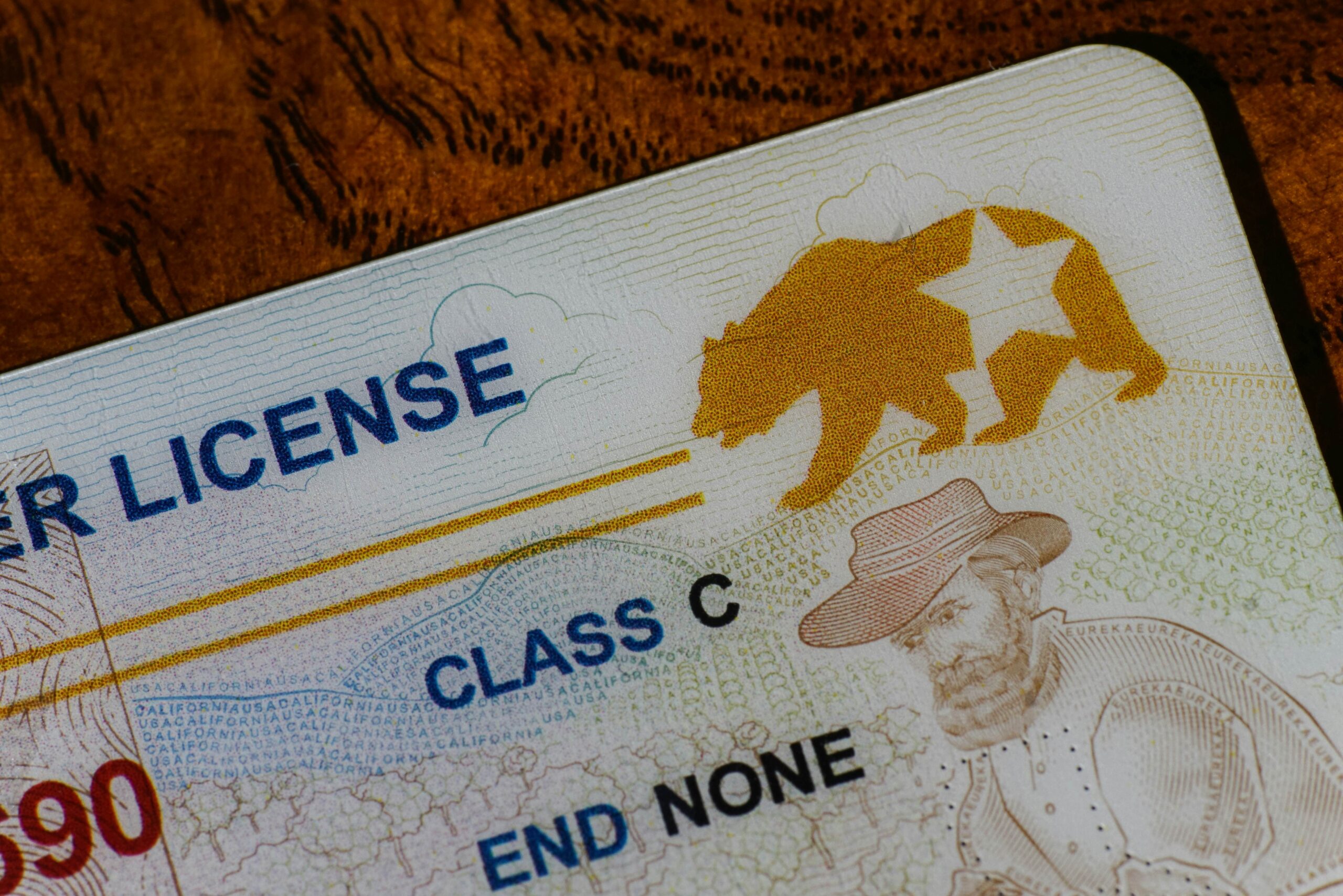
Any avid Outside reader should have The Ten Essentials etched into their memory. The venerable list of items that every hiker should take with them into the backcountry pays equal weight to insulation, fire-starters, and, of course tools. There are very few problems you’ll encounter in the wilderness where your tool of choice isn’t a knife. But what’s the best knife for the outdoors?
While I own dozens of options, the one I reach for most often is simple, small, and relatively affordable. My knife of choice is the Esee-3HM. Let’s talk about how you can find the knife that works for you.
What Kinds of Knives Work Best Outdoors?
Perhaps we should phrase the question like this: What tasks do you need a knife for on your next camping trip or hike? You might need to cut cordage so you can lash a shelter down in high wind. You might need to break down dead wood, to access its dry interior and start a fire. You might need to whittle a stick, to use as an extra tent peg or to roast a hot dog. If you’re fishing or hunting, you might need to remove guts or skin.
For general outdoors use, a knife is a tool for mights and maybes. If you’re planning to focus on a specific activity—say catching a fish—you might pack a specific tool like a filet knife. But if you’re just spending time outside, you’ll want to carry a knife capable of any task you might encounter.
So that’s what an outdoors knife is—one you can use for any task you might encounter outdoors.
What About Survival Knives?
In my opinion, the term “survival” has been co-opted by people trying to sell you a fantasy, rather than a useful tool matched to realistic needs. A good knife should be strong, sharp, and reliable. What you probably don’t need is the added weight and bulk a compass, fishing line storage, or saw teeth.
If you do find yourself in a survival scenario—say you’ve gotten lost and night is falling—the general-purpose nature of an outdoors blade is going to work better at getting a fire going or cutting pine boughs to sleep on than something purpose built for slicing open Tauntauns. Those other features just get in the way.
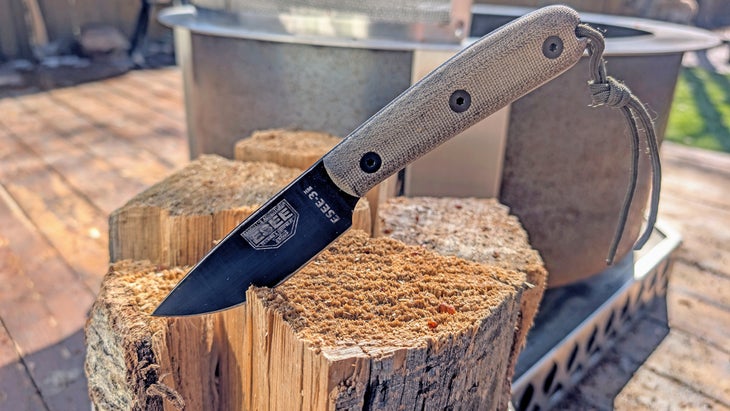
Why Not Carry a Multitool?
I get the appeal of toting a Leatherman or other all-in-one tool. With multiple tools and functions, it’s easy to think a multitool or Swiss Army knife might be more versatile tool. Here’s why it’s not.
Away from a Phillips-head screwdriver and can opener, the tool you’re going to find yourself using most often outdoors is a knife blade. And while yes, multitools and Swiss Army Knives do tend to include one of those, they’re usually small and of poor quality. Even if you do find a multitool with a good blade—like the new Leatherman Arc—that’s still going to fall short of most real knives for two reasons: 1) the handle will be uncomfortable and 2) it’ll be subject to failure.
It’s for those reasons that I carry a small multitool in addition to a real knife.
Can You Carry a Folding Pocket Knife?
Folding knives are far more prone to failure than fixed blades because of the mechanism that allows them to collapse.
That failure can be non-mission critical—the pivot can fill up with dirt and stop working. Or, should a locking mechanism break or come loose, that failure could cause the blade to slam shut on your hand, leading to significant injury. More commonly, folding knives just break in half if you try to use one to split firewood, leaving you without the tool you need to finish the job.
A fixed-blade, with no moving parts, is the better option as a result.
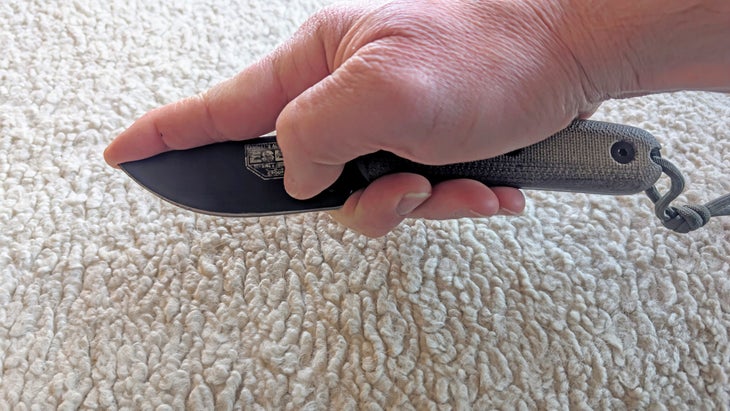
How Long of a Blade Do You Need?
Longer blades span larger pieces of wood, enabling you to more efficiently split those apart. The additional weight that comes with longer blades may also make them easier to chop with, although a knife is not the best tool for that job. Get a hatchet.
The shorter a knife’s blade is, the easier it is to carry and control.
My compromise on blade length: while holding the handle, I try to reach the tip of the blade with my index finger. I like that length because I hunt, and being able to cover the blade’s tip with my finger means I can reach inside a chest cavity, feel for the windpipe, and sever that without poking holes in other organs while I’m in there. But you’ll find this to be a good rule of thumb—or index—for judging a knife to be easy to carry and convenient to employ.
Consider the Handle
As I mentioned at the top, my knife of choice is an Esee-3HM. That combines a 3.63-inch blade with a thin handle which terminates at the base of the blade without any obstructions. You can really choke your hand all the way up into the choil (the finger shaped cutout behind the edge) for jobs where you need fine control.
That handle is made from linen micarta, a resin-impregnated fabric layup that leaves the end of the threads exposed. It’s virtually indestructible, but feels soft to the touch, and provides good grip while wearing gloves or barehanded, wet or dry.
The slim, elongated handle also facilitates comfort and security across all types of grip. The knife feels natural and comfortable any way you hold it.
The Importance of Blade Shape, Thickness, and Grind
Wonky blades that are shaped to cut only in certain directions, to protect their point while penetrating, or to work best while slicing, prioritize performance in those tasks over general utility. Try to split a log with some zanily-shaped knife and you’ll quickly become frustrated. Instead, look for a blade where the edge falls away from the tip in a generous sweep, then continues back toward the handle in a straight line. That shape will be the most versatile.
Recently, I’ve noticed a trend in the market toward very chunky blades, measuring a quarter inch or more in thickness. This is done for looks, not utility. A knife is not a pry bar; it is a cutting tool. The thicker a blade is the harder time it’ll have slicing through whatever it is you want to cut. The Esee-3HM’s one-eighth-inch thickness is ideal, lending the tool strength without getting in the way of the job at hand.
A blade is thinnest at its edge and thickest at its spine. Getting there in a straight line—forming a simple wedge shape—is the strongest arrangement and is very practical for splitting wood. Blades that feature a wide wedge terminating at a point below the spine won’t slice as well. Ones that use a concave shape from the edge to spine prioritize slicing performance over splitting.
What Makes a Knife Strong?
Look for a knife where the handle material is bolted to the outside of the blade’s steel, forming a place for your hands only. Knives where the handle continues rearwards beyond the steel can see the handle and blade separate under hard use, or after exposure to weather and chemicals.
What’s the Best Steel for Knives?
The variety of steel used to construct a knife, and the way in which it is forged, quenched, and treated, determine qualities like edge retention, ease of sharpening, chip and rust resistance, and even how fine of an edge is achievable at a microscopic level.
Because a sharp knife is also the safest and most useful knife, I try to prioritize ease of sharpening in blades I intend to carry outdoors. High carbon steels are generally good at that, even if they do tend to get rusty and tarnished. Esee’s 1095 steel is a proven performer, and also can be found at reasonable prices. The knife I’m using throughout this article retails for about $130.
Spend a little more on fancier blade steels like Magnacut for blades you plan to carry more than use. You’ll appreciate rust-resistance in a folding knife riding in a sweaty pocket.
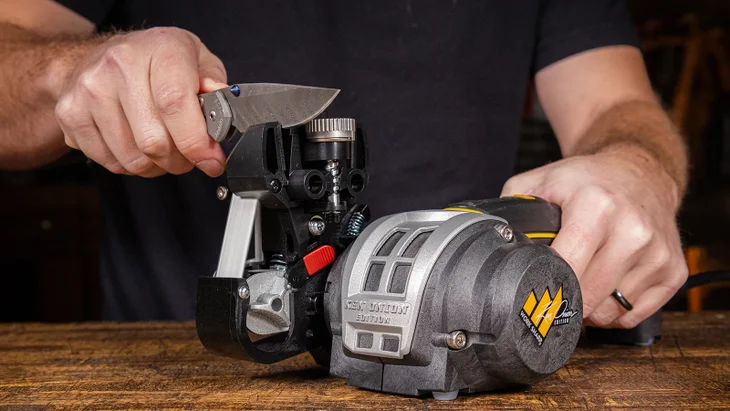
Don’t Overlook this Crucial Factor
A knife needs to be sharp. A sharp knife will require less force to use, reducing the odds of an accident. A sharp knife will also cause less damage to the medium being cut, and be easier to use.
I do not carry a field sharpener, instead preferring the ease of use offered by my powered Work Sharp station. Keeping knives touched up on that sharpener only takes a few seconds, and bringing a knife back from dull just requires a few minutes. Making sure my Esee has a razor’s edge before heading into the field has proven vital, as the blade stays useable even on trips lasting two weeks or more.
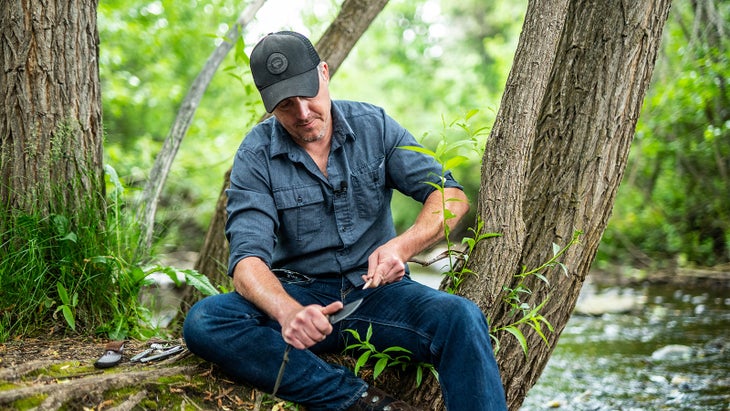
Wes Siler got his first knife in Cub Scouts, and has carried one nearly every day ever since. You can read more of his work on Substack, where he explores the intersection of outdoor skills and the politics of the great outdoors.
The post The Ultimate Guide to Choosing an Outdoors Knife appeared first on Outside Online.















